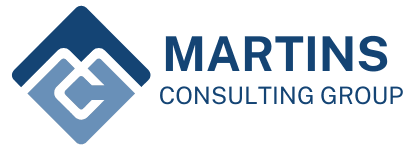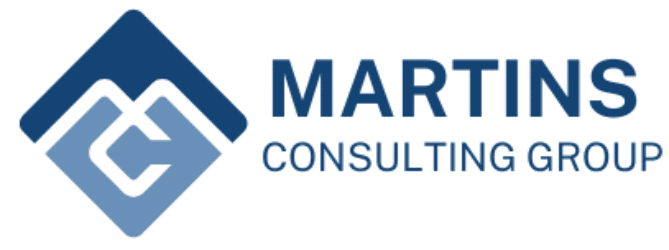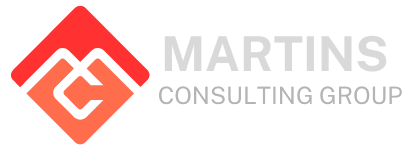Supply chain planning is the backbone of any business operation, serving as the bridge between raw material procurement, production, inventory management, and distribution. Whether you’re in manufacturing, retail, or logistics, an efficient supply chain plan can optimize operations, reduce costs, and improve customer satisfaction. After over 20 years of working as a consultant in supply chain strategy, I can confidently say that businesses that master supply chain planning gain a significant competitive advantage. In this blog post, I’ll provide a comprehensive guide on how to effectively plan your supply chain for improved efficiency, resilience, and scalability.
Why is Supply Chain Planning Critical?
In a world where customers expect faster deliveries and more personalized products, traditional supply chains are being tested. To meet these demands, businesses need to adopt advanced supply chain planning methods that enhance visibility, enable better forecasting, and streamline decision-making processes.
A well-developed supply chain plan ensures that products flow smoothly from suppliers to customers, preventing costly disruptions and delays. It involves balancing supply with demand, maintaining optimal inventory levels, and mitigating risks in the supply chain. Poor planning, on the other hand, leads to stockouts, overstocking, and inefficient processes, which can significantly impact profitability.
Key Components of Effective Supply Chain Planning
Supply chain planning involves a variety of processes, each contributing to the overall efficiency of the chain. Below are the core elements that should be part of a successful supply chain plan:
1. Demand Forecasting: Predicting Customer Needs
Accurate demand forecasting is the foundation of a successful supply chain. Predicting future demand is essential to ensure the right amount of inventory is ordered and available when needed.
- Historical Data: Analyze past sales data, seasonality trends, and market conditions to forecast future demand.
- Collaborative Forecasting: Involve sales, marketing, and even suppliers in the forecasting process to improve accuracy.
- Advanced Analytics: Leverage machine learning and AI-powered tools to make more precise demand predictions based on various influencing factors, such as promotions, weather patterns, and consumer behavior shifts.
Effective forecasting ensures that inventory is available to meet demand without overstocking, leading to cost savings and improved customer satisfaction.
2. Inventory Management: Balancing Supply and Demand
Inventory management is a delicate balancing act between having too much stock (which increases holding costs) and having too little (which risks stockouts). An optimized supply chain plan must focus on maintaining just the right amount of inventory.
- Just-in-Time (JIT): This inventory strategy minimizes holding costs by receiving goods only when they are needed for production or sale.
- Safety Stock: Maintain a buffer stock for high-demand or low-supply items to avoid disruptions due to unforeseen demand spikes.
- Inventory Optimization: Leverage data-driven tools to analyze stock levels, identify slow-moving items, and reduce excess inventory.
By streamlining inventory management, businesses can reduce costs, improve cash flow, and avoid operational disruptions.
3. Production Scheduling: Synchronizing Supply with Demand
Production scheduling ensures that manufacturing processes are aligned with customer demand. A well-designed schedule optimizes the use of labor, machinery, and raw materials, reducing idle time and preventing production delays.
- Capacity Planning: Understand your facility’s capacity and make sure it aligns with demand forecasts to avoid overburdening production lines or missing deadlines.
- Lead Time Reduction: Work closely with suppliers to reduce lead times for raw materials, allowing for faster production cycles.
- Batching & Sequencing: For products with varying production requirements, implement efficient batching and sequencing to minimize downtime and maximize throughput.
Effective production scheduling ensures that goods are manufactured on time and meet customer demand without delays.
4. Sales and Operations Planning (S&OP): Aligning Teams and Objectives
Sales and Operations Planning (S&OP) is the process of aligning different departments—sales, marketing, finance, and operations—around a unified forecast. The goal is to ensure that everyone in the organization is on the same page regarding demand and supply forecasts.
- Cross-Functional Collaboration: Involve key stakeholders from different departments to create a consensus-based forecast that aligns with business objectives.
- Financial Alignment: Ensure that supply chain plans support the financial goals of the business by accurately predicting revenue and costs.
- Scenario Planning: Use different scenarios (best-case, worst-case, and most likely) to prepare for fluctuations in demand or supply disruptions.
S&OP is essential for achieving synchronization between all facets of the business and aligning resources with demand.
5. Risk Management: Mitigating Potential Disruptions
Supply chain disruptions are inevitable, whether they are caused by natural disasters, political instability, or global pandemics. However, a solid supply chain plan includes strategies to mitigate these risks.
- Supplier Diversification: Relying on a single supplier for key materials is risky. Build relationships with multiple suppliers to reduce the impact of disruptions.
- Contingency Planning: Develop plans to respond to various risk scenarios, such as supplier failure, transportation delays, or sudden spikes in demand.
- Inventory Buffer: Maintain strategic safety stock or reserve resources to cover unexpected disruptions.
Proactive risk management allows businesses to respond quickly to disruptions, reducing the impact on operations and customer satisfaction.
Integrating Technology for Enhanced Supply Chain Planning
Incorporating technology into supply chain planning is no longer optional—it’s a necessity. The digital transformation of supply chains enables businesses to gain real-time visibility, improve forecasting accuracy, and streamline operations.
Warehouse Management Systems (WMS)
A WMS integrates with your supply chain plan to help track inventory levels, manage stock movements, and improve order accuracy. Real-time data from a WMS ensures that the supply chain team can make informed decisions based on the latest information.
Enterprise Resource Planning (ERP)
An ERP system connects all departments within the business, providing a centralized platform for managing inventory, production, orders, and finances. This integration enhances collaboration and decision-making across departments.
Artificial Intelligence (AI) and Machine Learning
AI and machine learning technologies can significantly improve forecasting, demand planning, and route optimization. These tools analyze large datasets and uncover patterns that human planners might miss, leading to more accurate predictions and efficient planning.
Blockchain for Supply Chain Transparency
Blockchain technology allows for transparent, secure, and real-time tracking of goods as they move through the supply chain. By providing end-to-end visibility, blockchain helps prevent fraud, reduce errors, and improve trust between partners.
Conclusion: A Well-Executed Supply Chain Plan is Key to Business Success
A carefully crafted supply chain plan is crucial for businesses that want to stay competitive in an increasingly complex global marketplace. By focusing on accurate forecasting, inventory management, production scheduling, S&OP, and risk management, businesses can ensure that their supply chains run smoothly, efficiently, and cost-effectively.
Incorporating the right technology and processes into your supply chain plan will not only optimize operations but also increase responsiveness and resilience. Businesses that excel in supply chain planning are better positioned to handle market fluctuations, supply disruptions, and customer demands with ease.
Ready to Optimize Your Supply Chain?
At Martins Consulting, we specialize in providing expert guidance in supply chain planning, helping businesses streamline their operations and achieve long-term success. With over 20 years of consulting experience, we can help you navigate the complexities of supply chain management, implement best practices, and harness the power of technology to stay ahead of the curve.
Contact us today to discuss how we can support your supply chain optimization efforts and help you build a more resilient, efficient, and agile operation.




Leave A Comment